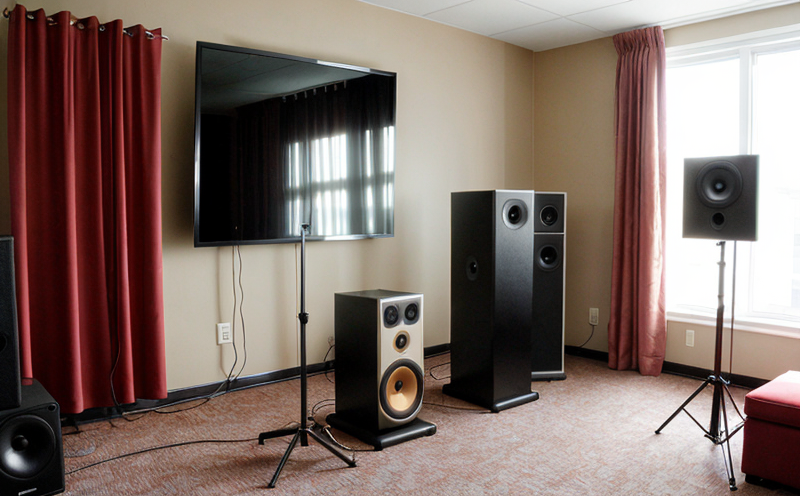ISO 532-2 Loudness Perception Testing (Moore-Glasberg Method)
The ISO 532 series of standards provides guidelines for the measurement and description of sound, including loudness perception. Specifically, ISO 532-2, titled "Loudness Perception," focuses on the psychoacoustics of human perception in relation to perceived loudness.
The Moore-Glasberg method is a well-established technique used for assessing loudness using perceptual scales. It involves the presentation of sound stimuli and the subsequent rating by listeners according to their subjective loudness level. This method is particularly useful in applications where accurate measurement of perceived loudness is crucial, such as audio engineering, broadcast media, and product development.
The test procedure typically includes several steps:
- Selection of a suitable stimulus signal that represents the sound sample for testing,
- Presentation of this stimulus to listeners under controlled conditions,
- Rating of loudness by each listener on predefined scales,
- Aggregation and analysis of these ratings to derive an overall perceived loudness value.
The results are often expressed in terms of the L, Lp, or La metrics, which quantify different aspects of perceived loudness. These values provide insights into how listeners perceive sound intensity and can be used for quality control purposes.
The application of this method is critical in sectors like audio engineering where the aim is to ensure that the final product meets user expectations regarding loudness levels. In broadcast media, it helps maintain a consistent auditory experience across different channels or platforms. Additionally, it plays an important role in R&D environments aimed at improving user satisfaction and comfort.
The Moore-Glasberg method adheres strictly to ISO 532-2 guidelines, ensuring reliability and reproducibility of results. By following these standards, laboratories can provide accurate and consistent data that is widely accepted within the industry.
Why It Matters
The importance of loudness perception testing cannot be overstated in various industries where sound quality significantly impacts user experience. Accurate measurement of perceived loudness ensures that products meet consumer expectations and regulatory requirements. For instance, in audio engineering, ensuring the correct level of loudness can prevent listener discomfort or dissatisfaction.
For broadcasters, consistent loudness across different programs is crucial for maintaining a cohesive listening experience. Without this consistency, viewers might encounter abrupt changes in volume levels, leading to poor user satisfaction and potentially lost audience engagement.
In R&D settings, the ability to predict how new designs will be perceived by end-users allows developers to iterate on their prototypes more efficiently, ultimately delivering better products faster. This predictive capability also aids in compliance with international standards like ISO 532-2, enhancing the reputation of both companies and individuals involved.
Why Choose This Test
- Reproducibility: The method ensures consistent results across different environments and operators,
- Standard Compliance: It aligns with international standards, making it suitable for global markets,
- User Satisfaction: Accurate loudness perception helps in designing products that meet user expectations,
- Regulatory Requirement: Many industries have regulations requiring adherence to specific loudness levels.
The use of this test allows organizations to demonstrate their commitment to quality and compliance, thereby gaining a competitive edge in the market. It also facilitates smoother interactions with regulatory bodies, reducing potential delays or complications during audits or inspections.
Customer Impact and Satisfaction
- Happiness: Products that meet user expectations regarding loudness are more likely to satisfy customers,
- Loyalty: Consistent quality leads to higher customer loyalty, reducing churn rates,
- Retail Performance: Satisfied customers are more likely to recommend products and services, boosting sales,
- Better Products: By aligning with user perceptions through this testing method, companies can enhance product design.
In summary, the ISO 532-2 loudness perception test is essential for any organization aiming to improve customer satisfaction and loyalty. It provides a robust framework for ensuring that sound products meet or exceed user expectations, thereby contributing positively to brand reputation and market standing.





